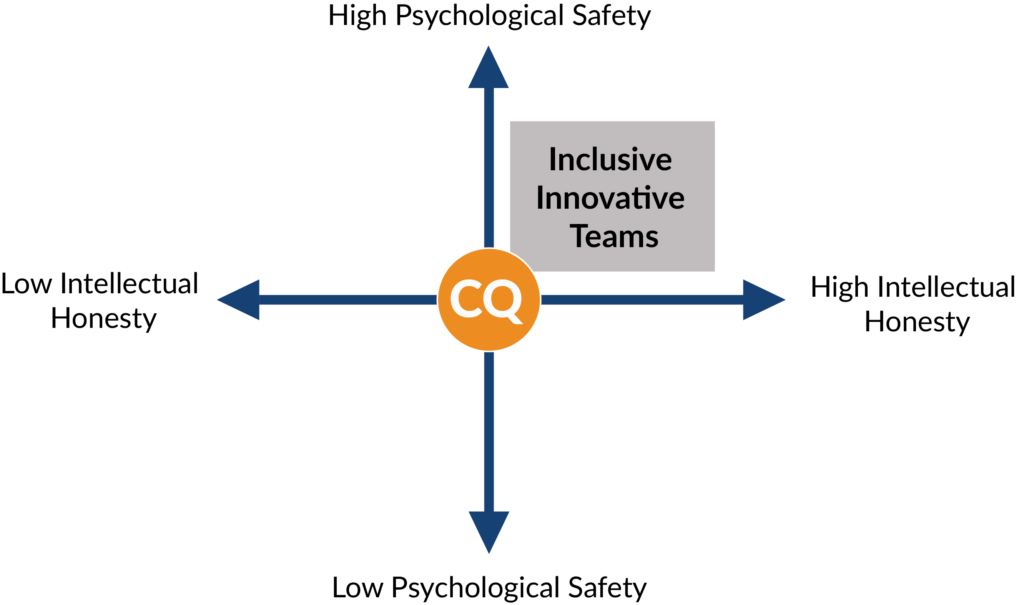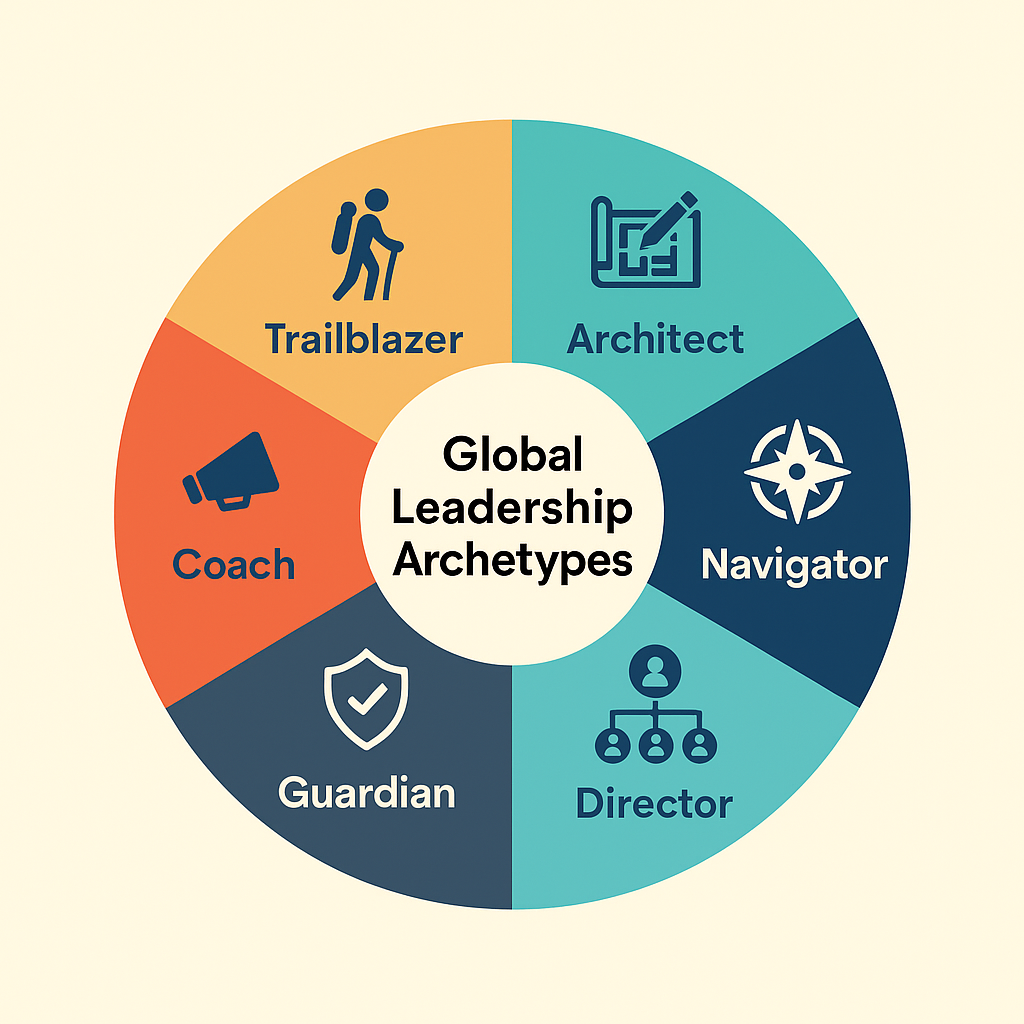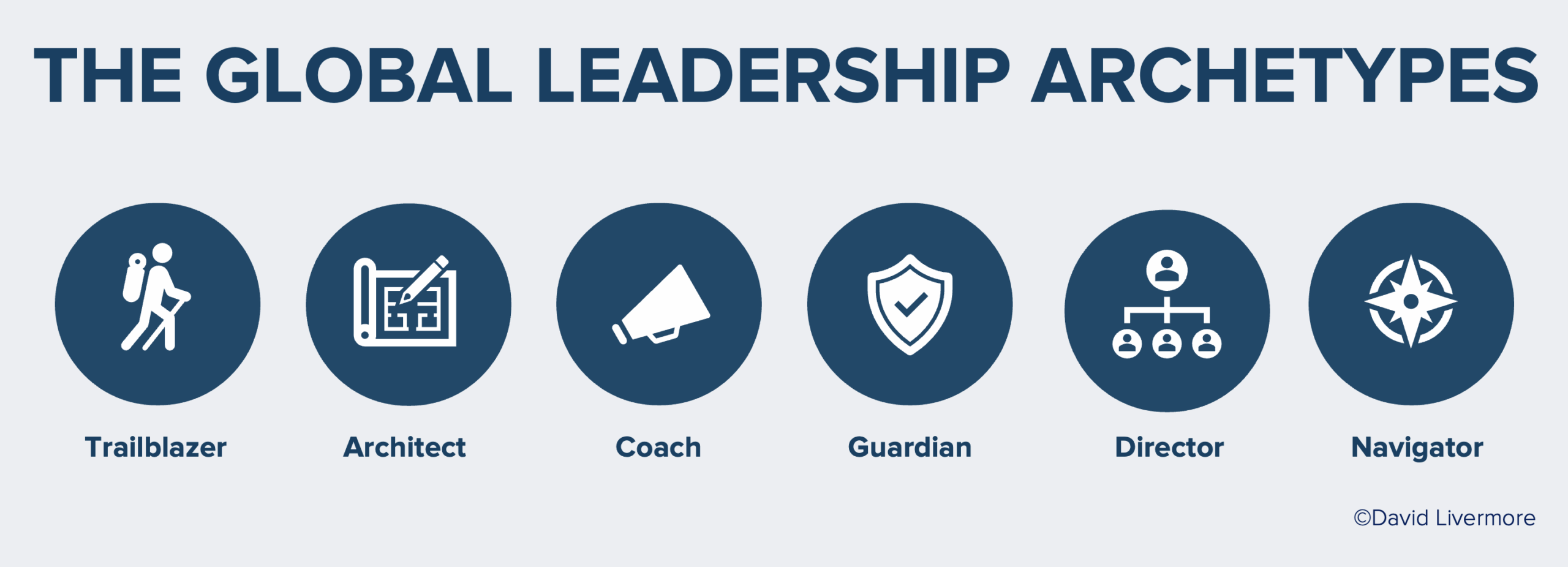
The world is run by teams. Teams build our houses and produce our food. They perform surgeries, teach kids, and run governments, schools, and companies. The top three stress factors for any team are uncertainty, ambiguity, and time pressure; and the more diverse the team, the more amplified these stressors become.[1] Applying cultural intelligence as a leader can make all the difference in whether the diversity on a team creates frustration and low productivity or leads to innovation and high performance.
There are three components of Team CQ. First, a culturally intelligent team has a team culture characterized by psychological safety and intellectual honesty. Next, it has an explicit set of culturally intelligent norms; and finally a culturally intelligent team applies CQ to its two most critical tasks: information exchange and decision-making.
Team Culture: Psychological Safety and Intellectual Honesty
The first step in developing CQ at the team level relies on building an inclusive culture that is psychologically safe and intellectually honest.
Psychological Safety: Team members feel safe to express their thoughts, questions, concerns, and mistakes without fear of punishment or humiliation. A psychologically safe environment encourages open communication and risk-taking, which are crucial for innovation and problem-solving.
Google has rigorously applied psychological safety to their team cultures and they measure it using a tool they call gTeam. The tool uses pulse surveys to assess a team’s psychological safety along with additional team dynamics such as dependability, clarity, and impact. Individuals on teams with higher psychological safety are less likely to leave Google, they’re more likely to harness the power of diverse ideas from their teammates, they bring in more revenue, and executives are two times more likely to rate them as effective.
Intellectual Honesty: Team members are willing to express dissonant ideas and constructively challenge each other. They provide and accept constructive feedback, which helps the team to continuously improve.
Psychological safety can’t come at the expense of intellectual honesty. With cultural intelligence, team leaders have the skills to develop a team culture where people feel safe to be open and honest with each other. This doesn’t happen automatically; the more diversity, the more the interpersonal friction becomes amplified. For far too many teams, disagreement doesn’t occur during a team meeting. It happens through side conversations and text messages exchanged before and after the meeting, promoting increased frustration and division and limited benefit from the diverse perspectives and experiences. Only as leaders and team members exercise their CQ can they develop a team culture built on safety, trust, risk, and brutal honestly.

Establish Team Norms
The next step of Team CQ is to establish explicitly inclusive team norms. Every team has norms, but they’re often implicit. A team might have an unspoken rule that meetings always start five minutes late, or that team members should respond to emails after hours. A culturally intelligent team establishes clear and explicit norms that define acceptable behaviors, communication styles, and decision-making processes that are both inclusive and support high team performance. These norms should be co-created with input from all team members to ensure buy-in and relevance. Culturally intelligent leaders can establish team norms by following this process:
1. Outline Team Differences
Begin by identifying the differences within your team. This includes visible differences such as seniority, age, race, or ethnicity, as well as less apparent ones like personality styles and cultural values. Ask team members to share their preferred working styles, feedback preferences, strengths, areas for improvement, and stress responses.
2. Identify Current and Desired Norms
Conduct an inventory of existing team norms, both implicit and explicit, and assess the effectiveness of the norms for leveraging your team’s differences. Contrast current norms with desired norms that support diverse perspectives and psychological safety.
3. Create Behavioral Indicators of Norms
Define specific behaviors that represent each norm, ensuring they are flexible enough to accommodate different cultural values. Discuss various ways to express a norm, collaboratively creating a range of acceptable behaviors.
4. Monitor and Reinforce Norms
Ensure adherence to the norms and make necessary adjustments as the team evolves. Regularly discuss norms in feedback sessions and performance reviews, and address violations to maintain trust and efficiency.
Information Sharing and Decision-Making
Finally, culturally intelligent teams apply CQ to the two functions teams perform most—information sharing and decision making. These functions are also two areas where underrepresented groups are most likely to feel excluded on a team: Why am I always the last person to hear anything? And Why do decisions always seem to get made without me? With cultural intelligence, leaders and their teams can perform these functions more effectively and inclusively.
Information Sharing
Diverse teams provide access to higher quality ideas because of the diverse perspectives and experiences represented. But apart from cultural intelligence, diversity impedes information sharing. Here are a few ways leaders can encourage a better flow of information across a team:
Bottom-Up Information Sharing:
- Provide Advance Warning: Give team members, especially introverts and non-native speakers, time to prepare their insights in advance. This is particularly crucial for individuals with high uncertainty avoidance and collectivist orientations.
- Clarify Input Needed: Specify the type of information you expect, whether it’s a progress update, an opinion, or stakeholder feedback, to ensure relevant contributions and avoid groupthink. Be explicit about whether everyone is expected to provide input.
- Offer Multiple Input Methods: Provide various ways to share input, such as verbal, written, or group formats, to cater to different communication preferences and ensure comprehensive participation.
Top-Down Information Sharing
- Ensure Clarity: Regardless of cultural differences, all team members appreciate clear communication. Ensure that your messages are unambiguous and straightforward.
- Adapt Communication Styles: Use various communication methods and styles to cater to different cultural preferences. Some team members may prefer detailed emails, while others might value brief updates or visual aids.
- Moderate Transparency: Regularly share information about decisions, changes, and updates from senior leadership to build trust. But monitor what information to share based on the diversity of your team (e.g., those who are risk averse may feel anxious with an update that doesn’t have a certain outcome included).
Decision Making
The other task nearly every team has to do is make decisions. The degree to which teams are empowered and expected to make decisions varies, but every team is making decisions about how to prioritize their tasks and accomplish their goals. Here are a few ways leaders can encourage better decision-making on their teams.
- Spend More Time Defining the Problem: Encourage the team to deeply analyze and understand the problem before jumping to solutions. This helps incorporate diverse perspectives and leads to a richer understanding of the problem and its challenges.
- Classify the Decision: Explicitly classify decisions as big bet, mid-range, or every day decisions. Ensure the team knows their level of decision-making authority and when to seek input, providing clarity and empowerment.
- Define the Decision-Making Process: Clearly outline the process for making decisions, especially for big bet and mid-range decisions. Specify if input is being used to shape the decision or just to gauge opinions; be transparent about whose input is prioritized.
- Consider Cultural Preferences: Recognize that team members from different cultural backgrounds may have varying comfort levels with decision-making. Provide coaching and support to those who may be more risk-averse or accustomed to high power distance environments.
- Communicate the Decision Clearly: Once a decision is made, ensure it is communicated clearly and appropriately to the team. Some may prefer a straightforward announcement, while others may need a detailed explanation to fully understand and support the decision.
Conclusion
The better teams become at working effectively with each other and drawing on the diversity of the team, the better they will get at understanding and working effectively with a diversity of customers and partners. With cultural intelligence, you can develop a team culture characterized by psychological safety and intellectual honesty, reinforced by clear and inclusive norms, resulting in more effective information sharing, decision-making, and overall performance.
**This brief is an excerpt from the 3rd edition of LEADING WITH CULTURAL INTELLIGENCE and is part of the CQ Leader’s Toolkit
**Read the Briefs on PERSONAL CQ and ORG CQ
[1] Noel Tichy, Managing Strategic Change. Technical, Political, and Cultural Dynamics. New York: Wiley-Interscience (1983), 103. And Noel Tichy, The Leadership Development Program. Presented at the Building the Leadership Engine, Ann Arbor, 2002.



